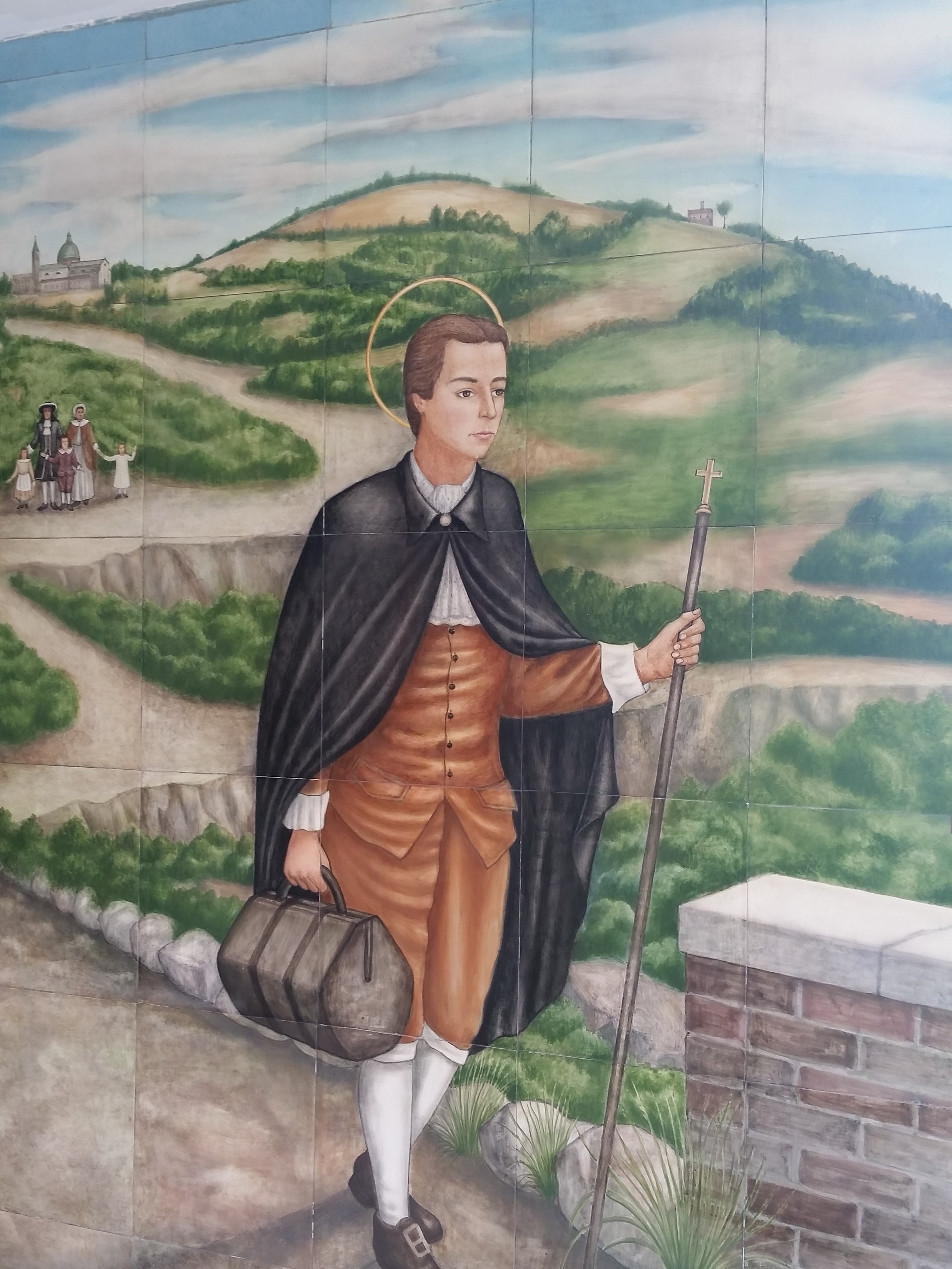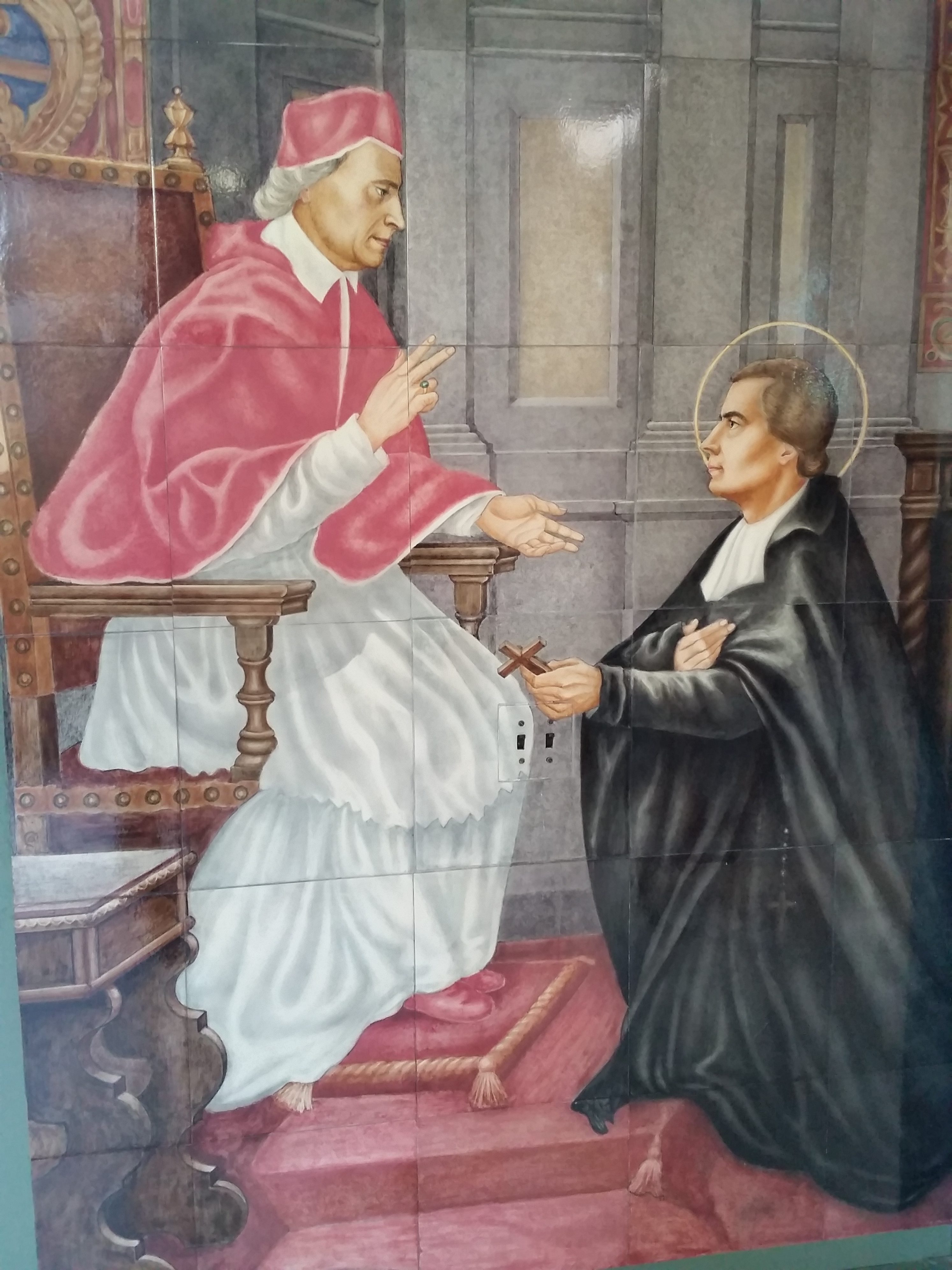Saint Louis Marie de Montfort
An Often Misunderstood Saint Part X: An Apostle Sent by the Father
Fr. Patrick Gaffney, SMM
Why did Saint Louis de Montfort have such difficulties with his religious superiors? As we saw in the last installment, some maintain that his “quirks” or “singularities” were the reason. But that is a superficial response. There must be a more profound reason. It certainly was not the content of his preaching, surely not disobedience on his part and not any personal fortune or claim to fame that he would have been seeking. Then what was the reason?
T o begin with, the missionary was utterly convinced that he was sent by the Lord to proclaim the Reign of God. This gave him amazing zeal and strength. In fact, Montfort sees himself – and also his Missionaries of the Company of Mary – as participating in the dynamism of the Trinity. Not only similar to, but within the sending of the Word as Good News to sinful creation, is to be found the sending of the apostles and of Louis de Montfort and his mission-band community. Just as his obedience to Father Lesehassier gave him the affirmation of his apostolic vocation, even more so, his pilgrimage to the Vicar of Christ was to make explicit and even more intense his mandate of being sent by the Father through Christ Jesus, in the power of the Spirit.
The title, Apostolic Missionary although apparently devoid of any special privileges or powers, was for Montfort an important and much sought after reinforcement of his vocation as an apostle. “The mission of the apostolic men is a continuation and an imitation of that of the Son of God who said to his disciples: ‘I send you as my Father has sent me.’ ” LS 778. “Let them remember that it is Jesus Christ who is sending them just as He sent the apostles” (RM 65).
He knew himself to be in Christ Jesus because of his baptism; he knew himself to be in persona Christi because of his priestly ordination; he knew that “the preaching of the divine word of God is divine word.” It is not that he denied that these privileges exist in others. We could say that he surely recognized that all the baptized are ontologically in Christ Jesus, that all priests are ontologically in the person of Christ; however, he was convinced that the number of those whose lives truly manifest these truths is far too small. And few, if any, so radically did live the reality of baptism and priestly ordination as the missionary from Montfort, the saint, the mystic. These truths became, so to speak, incarnate in Saint Louis de Montfort. His bearing, his attitudes, his preaching, his deeds reveal this. To a degree, his eccentricities as an apostolic missionary was no more than the manifestation of his bone-marrow conviction that as baptized and as a priest-missionary, he was in the very person of Christ, the missionary of the Father.
An Apostle of the End of Times
Since in Christ the end time has broken into history, Montfort believed that especially he and his mission band were in a special way, apostles of the end-time. Since they are by the mysterious will of God in a unique way the presence of Christ in the world, their task is to lead the people of God in the implementation of the victory won by the Lord through his triumphant Cross. His Christ-centeredness turns him into a fiery eschatological preacher, not only looking forward to the glorious return of Jesus, the Son of Mary, but bringing it about by his preaching.
And so he, an unknown, young priest from the boondocks of Brittany, fearlessly undertook grandiose projects, huge Calvaries, religious congregations, town missions, identified with the homeless, wrote spiritual masterpieces, for he was to “reform the Church and renew the face of the earth.” One with Christ, he battled for man’s heart and so convinced of victorious cross, could not be discouraged by what appear to be major disasters like the destruction of his Pontchateau Calvary.
A Marian Apostle
Even his intense devotion to Our Lady flows from and in turn strengthens his union with Christ. Jesus’ mother must be mother. He entered into such a tender union with Mary for such was the life of Jesus whom was Montfort’s only center. Jesus, the Second Person of the Trinity enfleshed, is dependent on Mary not only on her womb, but more importantly, on her faith, her YES; then Louis de Montfort must also be dependent on her. This mysterious, desired dependence on Our Lady was the will of the Father who sends him and the Spirit who vivifies him. Therefore, consecration to Mary – in order to be more fully consecrated to her Son – is inextricably woven into every thread of Montfort’s life.
These imposing actions and plans, the end-time victorious preaching, troubled some priests and Bishops. The clergy, modeled on the Sulpician image, must be always prudent, careful, moderate, definitely not unreserved. Louis de Montfort, so incredibly convinced of his oneness in Christ, became in the eyes of some, “eccentric”, “odd”, and perhaps even a nuisance. Better to get rid of him.
But can we go deeper? Were not his “balanced” Sulpician professors also convinced of their union with Christ Jesus? And who would dare say that they were not faithfully living their commitment? Yet they were surely not eccentric. And the Bishops who expelled him, were they not – at least most of them – men of excellent character, faithful to their calling? But no one has ever called them “odd” or “fools”. What is it in Montfort that forces him to so externalize the truth of God’s victorious love that he becomes a suspicious radical in the eyes of some of his religious superiors? True, it can be said that his heroic sanctity is at the root of his extraordinary, shocking zeal. But what is it in this priest which makes him express – so naturally – the great mystical gifts bestowed on him by God and thereby become a curiosity – if not a fool – in the eyes of many?


Tile murals depicting two scenes of St Louis de Montfort’s Life
These two murals appear immediately outside the chapel in Montfort’s Spiritual Center. The first scene depicts Louis Grignion’s leaving to begin his studies in Paris. Louis Grignion walked to his destinations and this journey was no different. It is over 250 miles between the towns. He would give up his clothes and money along the way.
The second scene depicts his visit to Rome to seek an audience with the pope and receive clarification and direction for his missionary assignment and for his ministry.
The murals are two of the six scenes in the chapel.
Montfort could not restrain his love for the Lord, he could not just “keep it in his heart.” He overflowed with it. It is this key insight into his personality which makes us understand why he has been compared to a roaring torrent cascading down a mountainside taking everything along with it or a blazing fire that turns everything into flame.
An “Incarnational” Apostle
There we have it! Louis de Montfort had to openly and clearly dramatize not only who he is but all the truths of the faith. To put it simply: Fr. de Montfort was strongly demonstrative, or a s he describes himself: “my natural tendency to show off”. This is a defining characteristic of his personality, a quality which was instinctive in him and which no one, not even Leschassier, could cure. The Holy Spirit poured Himself into a psychological framework which the Spirit Himself had formed. This “gift of nature” – a temperament artistic, unconstrained, expressive – Louis de Montfort opened up entirely to the gift of the Spirit, and became a truly extraordinary saint. “The burning, impetuous zeal of M. de Montfort often drove him to manifestations of devotion which did not please everybody, not even his friends and even less the ecclesiastical authorities.” writes Blain.
Montfort expresses, enfleshed his convictions. And his most fundamental one was the Tenderness of the Father, so slighted by sin, so merciful in the Incarnation, so victorious in the Cross of Jesus. There is a certain demonstrative violence in the Grignion family: a tempestuous father, an uncle a murderer, cousins gangster and his own avowal that were it not for the grace of God, he would have become the worst criminal France had ever known. There is also a certain violence in Louis-Marie Grignion. It has nothing to do whatsoever with destruction or irrationality. It is the evangelical violence of burning zeal for the reign of God. What inspires Louis Marie’s strongly demonstrative personality is the overpowering, unmerited gift of the Spirit – which he so fully accepts – filling him with knowledge and love of the Triune God.
Montfort could not restrain his love for the Lord, he could not just “keep it in his heart.” He overflowed with it. It is this key insight into his personality which makes us understand why he has been compared to a roaring torrent cascading down a mountainside taking everything along with it or a blazing fire that turns everything into flame. There is a word that many if not most people to describe such a rare phenomenon: eccentric.
(to be continued)
The Triumph of The Cross
The Cross in mystery
Is veiled for us below
Without great light to see;
Who shall its splendor know?
Alone the lofty mind
Shall this high secret trace;
And none shall heaven find
Who grasps it not by grace.
St. Louis de Montfort
Have you missed any of part / article of this series?
Use this link to see / access all published articles within the series.
The Queen:
Vol. #011 November 2021


